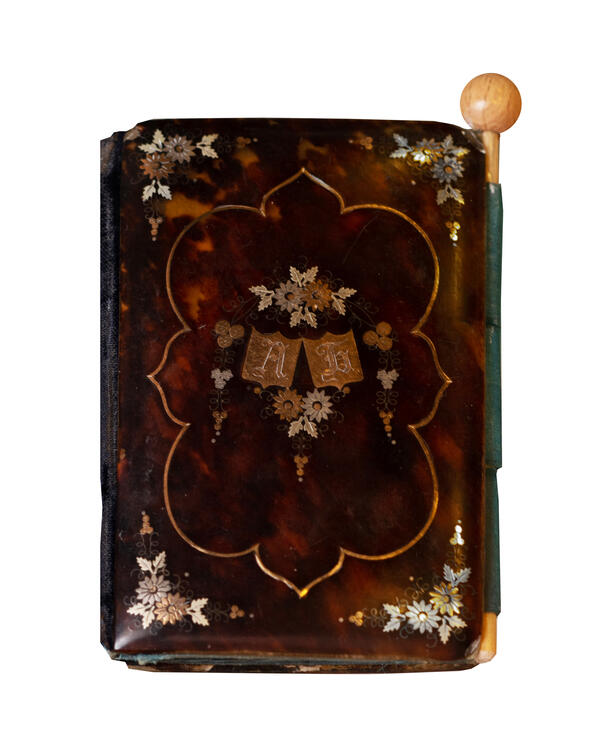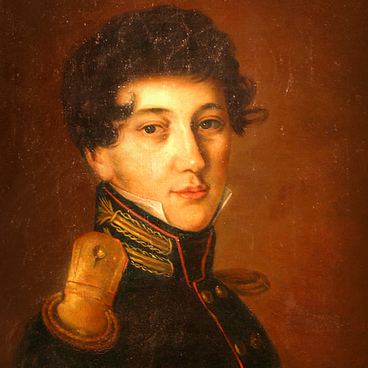In 1826 Yevgeny Boratynskiy settled in Moscow and married Anastasia Engelhardt (1804-1860). The marriage was not perfect, but it was wise, as Peter Vyazemski wrote in one of the letters to their mutual acquaintances. In Kazan, the Boratynskiy family lived in the estate of the father-in-law, poet Lev Engelhardt.
They met in Moscow at the house of Denis Davydov in the spring of 1826, and in the summer they got married. As a dowry, the family received a rich estate Kaimary in the Kazan governorate. The estate required attention, therefore the poet and his family came from Moscow to Kazan several times in the late 1820s - 1830s to settle the estate affairs.
His family was growing quickly. Boratynskiy often raised the question of raising children in the correspondence with his family. After all they had three sons and four daughters. At the same time their relations of the married couple worked well and were full of love and tenderness: “Oh, believe me, love: you are more important to me than fame”, - the poet confesses in one of his poems dedicated to the wife.
The miniature ball book from a tortoise shell was a gift to the wife. It is one of the family’s precious relics preserved in the museum. The book is decorated with exquisite inlay of gilt and mother-of-pearl, and a monogram ‘AB’ - Anastasia Boratynskaya.
Such books were called carnet or carnet de ball. The word comes from the French word ‘carnet de bal’. In the 19th century, balls could last up to ten hours and include up to twenty dances. In order to avoid fuss and possible conflicts, the suitors invited the ladies, who in turn having received an invitation would write the names of the suitors in the ball book.
They usually had bone, silver or leather binding with gold embossing and incrustation. The books were decorated with precious and semi-precious stones, silk and embroidery. This is how they became pieces of jewelry.
An important element of the carnet was a small pencil. The book pages were usually made of paper, cardboard or thin ivory plates. During the restoration of Anastasia’s carnet the specialists found a touching pencil inscription inside the blue satin pocket: “I love you very much”, written probably by Evgeniy Boratynskiy himself.
They met in Moscow at the house of Denis Davydov in the spring of 1826, and in the summer they got married. As a dowry, the family received a rich estate Kaimary in the Kazan governorate. The estate required attention, therefore the poet and his family came from Moscow to Kazan several times in the late 1820s - 1830s to settle the estate affairs.
His family was growing quickly. Boratynskiy often raised the question of raising children in the correspondence with his family. After all they had three sons and four daughters. At the same time their relations of the married couple worked well and were full of love and tenderness: “Oh, believe me, love: you are more important to me than fame”, - the poet confesses in one of his poems dedicated to the wife.
The miniature ball book from a tortoise shell was a gift to the wife. It is one of the family’s precious relics preserved in the museum. The book is decorated with exquisite inlay of gilt and mother-of-pearl, and a monogram ‘AB’ - Anastasia Boratynskaya.
Such books were called carnet or carnet de ball. The word comes from the French word ‘carnet de bal’. In the 19th century, balls could last up to ten hours and include up to twenty dances. In order to avoid fuss and possible conflicts, the suitors invited the ladies, who in turn having received an invitation would write the names of the suitors in the ball book.
They usually had bone, silver or leather binding with gold embossing and incrustation. The books were decorated with precious and semi-precious stones, silk and embroidery. This is how they became pieces of jewelry.
An important element of the carnet was a small pencil. The book pages were usually made of paper, cardboard or thin ivory plates. During the restoration of Anastasia’s carnet the specialists found a touching pencil inscription inside the blue satin pocket: “I love you very much”, written probably by Evgeniy Boratynskiy himself.



